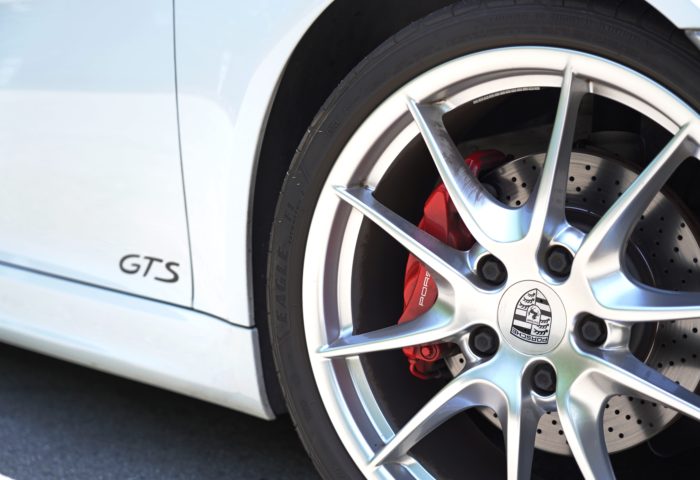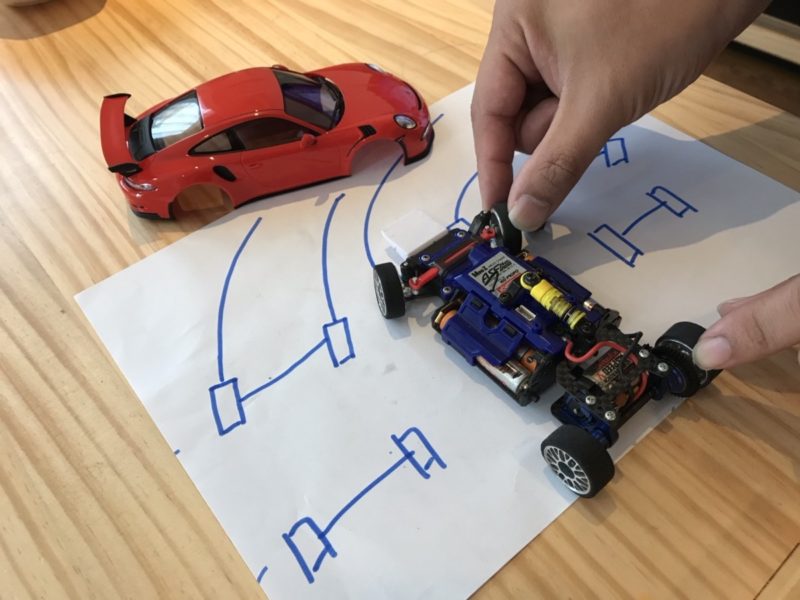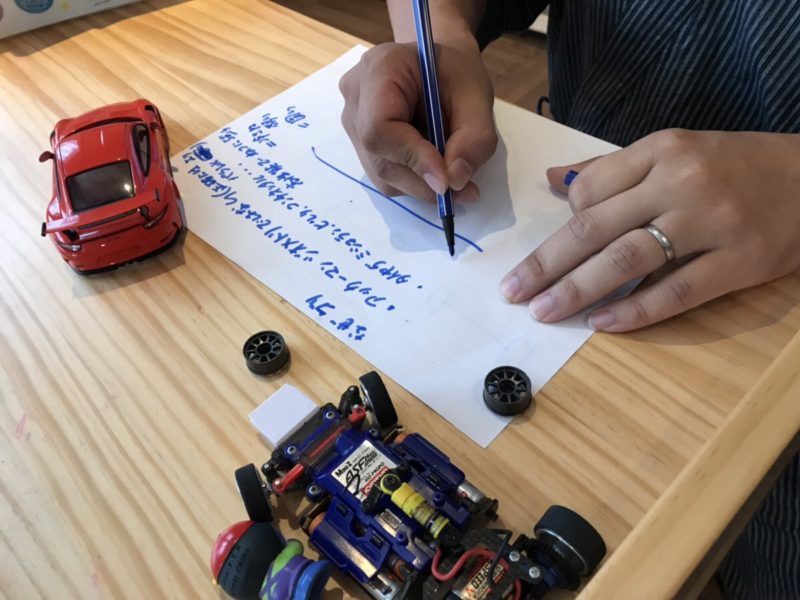Is It a Defect When Porsche Tires Make a Grinding Noise at Low-Speed Turns?
公開日:2018.10.02

コンテンツ
The Tire “Grinding” Noise
On cold winter days, when turning the steering wheel at low speeds, you might hear a “grinding” or “scraping” noise from the tires. (For example, when turning right or left to exit a parking lot.) Some owners have even contacted their dealer asking, “Is this a defect?” But to put it simply, this is not a defect.
My husband recently explained the reason behind this, but as usual, I didn’t quite get it… When I said, “I’m not good at physics, so I don’t understand the theory (-_-),” he replied, “This isn’t about physics, it’s common sense lol,” and then started a lecture using a remote control car (*_*).

What Causes the Tire “Grinding” Noise?
Porsche uses parallel steering geometry instead of Ackermann steering geometry for its steering mechanism.
Ackermann steering geometry is common in most passenger cars. When making a sharp turn at very low speeds, the turning radius of the left and right tires differs, so if the front tires turn at the same angle, it becomes difficult to turn smoothly. To prevent this, Ackermann steering geometry sets different steering angles for the left and right front tires.
However, if Ackermann steering geometry is used, at medium to high speeds, the car cannot take advantage of centrifugal force characteristics to make smooth turns. For example, when taking a right corner, centrifugal force increases the load on the left tires and decreases it on the right tires. The lighter load on the inside tires improves cornering performance and allows smoother turns, but this advantage is lost with Ackermann steering geometry.
Therefore, sports cars and racing cars deliberately avoid Ackermann steering geometry and instead use parallel steering geometry (a steering link mechanism where the inner and outer front tires turn at nearly equal, parallel angles) to enable smoother cornering at medium to high speeds.
Because of this, when making a sharp turn at very low speeds, the inner and outer front tires turn at almost the same angle, causing the front wheels to slip sideways and produce the “grinding” or “scraping” noise.
Additionally, Porsche tires are high-performance and heat-resistant (see What the “N (number)” Means on Porsche Approved Tires and Behind the Scenes of Approved Tire Development), so in cold winter temperatures, the stiff, chilled tire blocks rubbing against asphalt also cause this noise.
In other words, this noise is a sign that “your Porsche is a true sports car” and “equipped with high-performance tires.”
A Mark of Porsche
Why does Porsche adopt parallel steering geometry? I guess it’s because:
① To enable smooth cornering at medium to high speeds
② To improve steering response while driving
③ To reduce unnecessary load and heat on the inside tires during circuit driving
That’s what I think. Before I knew it, my husband had written all this down on paper to explain it to me. (Though his handwriting was so messy I could barely read it lol)

I had occasionally heard this “grinding noise” while driving and thought, “It’s because I’m a bad driver putting too much strain on the tires.” But learning that’s not the case was a relief (laughs).
By the way, my husband said,
“This grinding, scraping noise is proof you own a Porsche. If you don’t like this sound, then you shouldn’t be driving a Porsche. You should be driving a luxury domestic car or a regular passenger car! Actually, you should be proud of this noise!”
He said that lol.
Wow, sports cars really are fascinatingly complex machines.
このブログが気に入ったらフォローしてね!


Comment ( 0 )
Trackbacks are closed.
No comments yet.